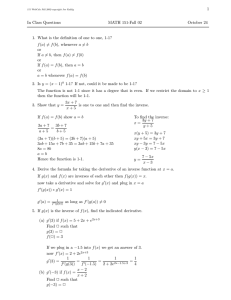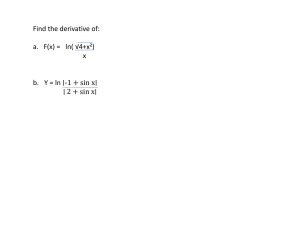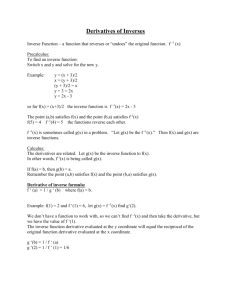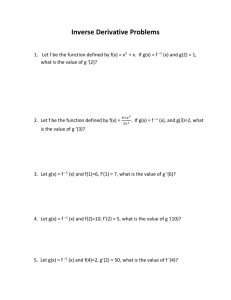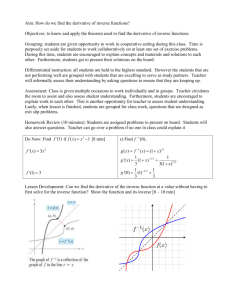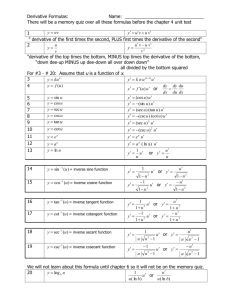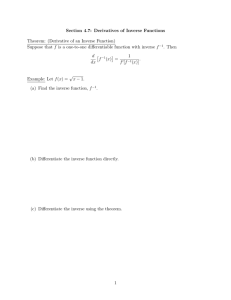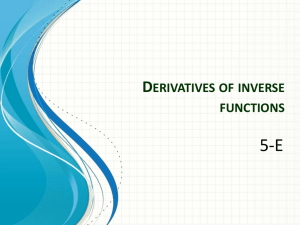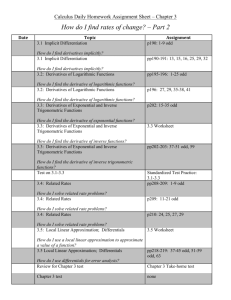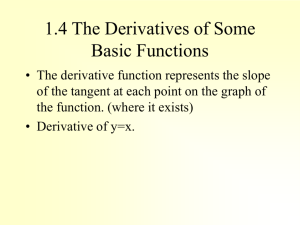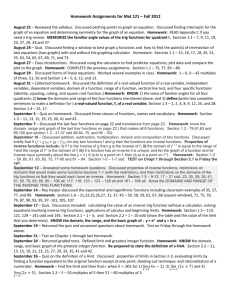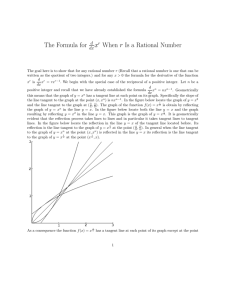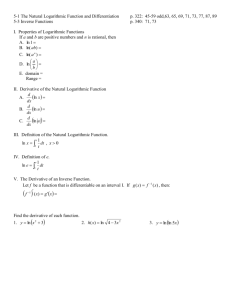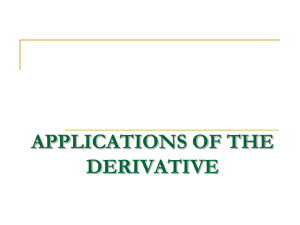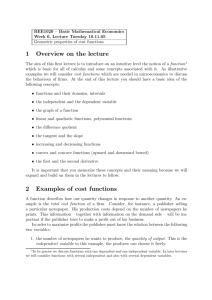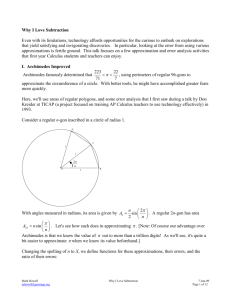Derivatives of inverse function . The beauty of this formula is that we
advertisement
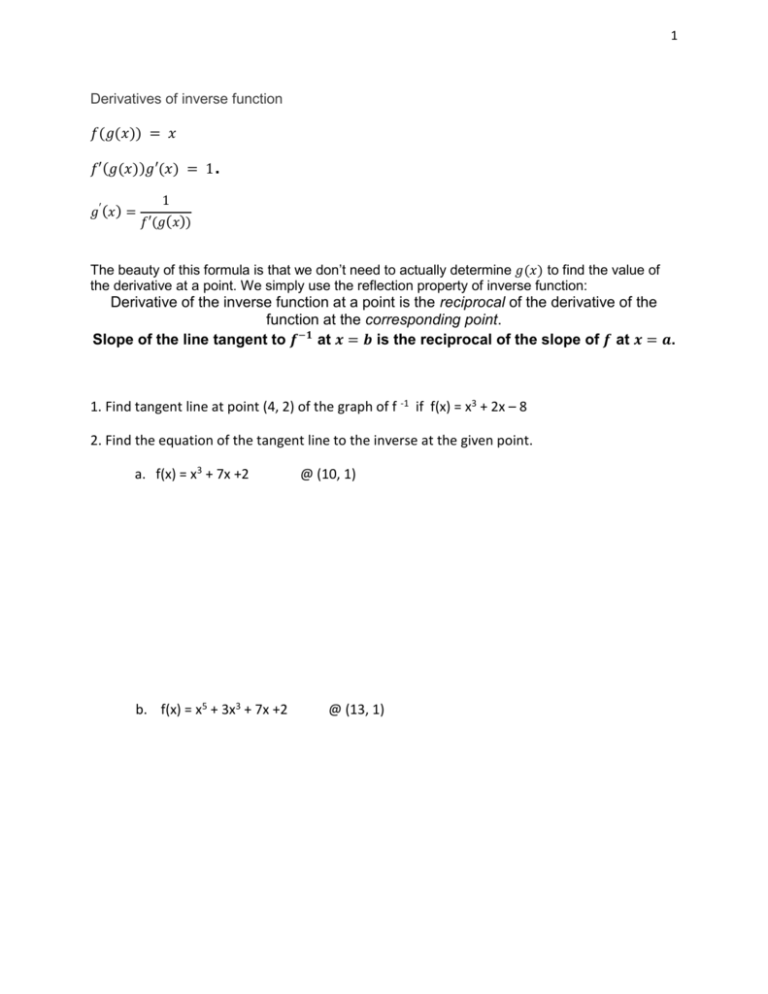
1 Derivatives of inverse function 𝑓(𝑔(𝑥)) = 𝑥 . 𝑓′(𝑔(𝑥))𝑔′(𝑥) = 1 𝑔′ (𝑥) = 1 𝑓′(𝑔(𝑥)) The beauty of this formula is that we don’t need to actually determine 𝑔(𝑥) to find the value of the derivative at a point. We simply use the reflection property of inverse function: Derivative of the inverse function at a point is the reciprocal of the derivative of the function at the corresponding point. Slope of the line tangent to 𝒇−𝟏 at 𝒙 = 𝒃 is the reciprocal of the slope of 𝒇 at 𝒙 = 𝒂. 1. Find tangent line at point (4, 2) of the graph of f -1 if f(x) = x3 + 2x – 8 2. Find the equation of the tangent line to the inverse at the given point. a. f(x) = x3 + 7x +2 b. f(x) = x5 + 3x3 + 7x +2 @ (10, 1) @ (13, 1) 2 c. f(x) = e-2x – 9x3 + 4 d. f(x) = x7 + 2x + 9 e. f(x) = x5/3 𝑒 𝑥 𝑓. 𝑓(𝑥) = 2 −𝑒 −3𝑥 𝑥2 + 1 g. f(x) = 7x + sin (2x) @ (5, 0) @ (12, 1) @ (e, 1) @ (−1, 0) @ (0,0) 3 h. f(x) = x3 + 8x + cos (3x) i. f(x) = 10x + (arc tanx)2 j. f(x) = 7x3 + (ln x)3 @ (1,0) @ (0,0) @ (7, 1) 3. A function 𝑓 and its derivative take on the values shown in the table. If 𝑔 is the inverse of 𝑓, find 𝑔′ (6). x 2 6 f(x) 6 8 f’(x) 1/3 3/2 4 4. Let y = f(x) = x3 + x + x – 2, and let g be the inverse function. Evaluate g’(0). SOLUTIONS 1. 𝑓(𝑦(𝑥)) = 𝑥 𝑓′(𝑦(𝑥))𝑦′(𝑥) = 1 𝑦 ′ (4) = f’ = 3x2 + 2 2. a y – 1 = 1/10 (x – 10) 2. b y – 1 = 1/21 (x – 13) 2. c y = - ½ (x – 5) 2. d y – 1 = 1/9 (x – 12) 2. e y–1= 1 2. f y = 1/3 (x + 1) 2. g y = 1/9 x 2. h y = 1/8 (x-1) 2. i y = 1/10 x 2. j y – 1 = 1/21 (x – 7 ) (2𝑒 + 5/3 𝑒) 3. 𝑓(𝑔(𝑥)) = 𝑥 (x – e) 𝑓′(𝑔(𝑥))𝑔′(𝑥) = 1 f-1(4) =2 𝑓′(𝑦(4))𝑦′(4) = 1 1 𝑓′(2) = 1/14 𝑓′(𝑔(6))𝑔′(6) = 1 𝑓′(2)𝑔′(6) = 1 𝑔′ (6) = 3 4. f’(x) = 3x2 + 1 𝑔′ (𝑦) = 1 3𝑥 2 +1 g’(0) = 1/(3(1)2 + 1) = 1/4 x=? when x3 + x – 2 = 0 ⇒ x=1

